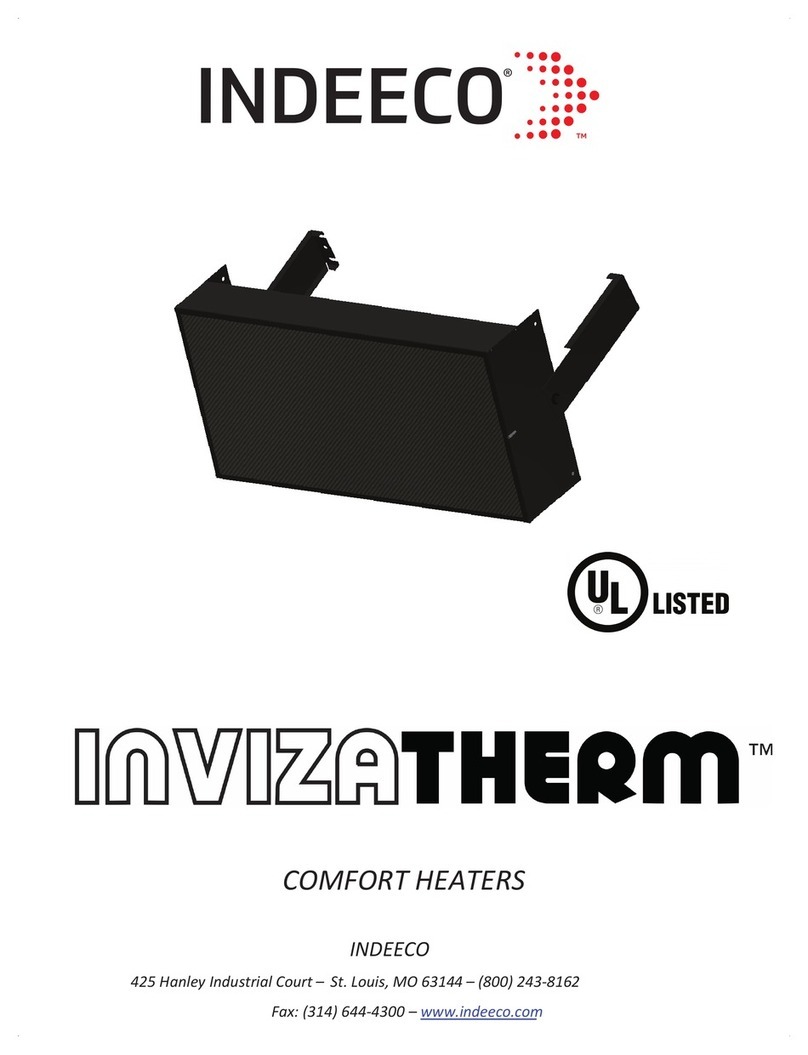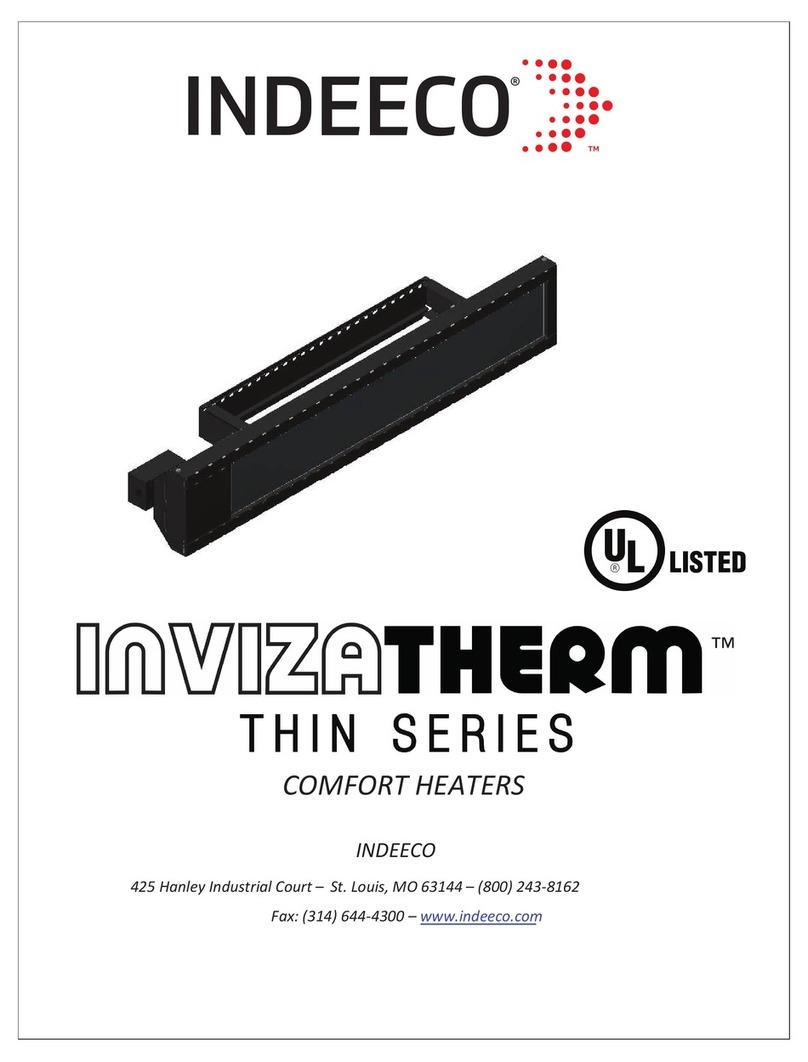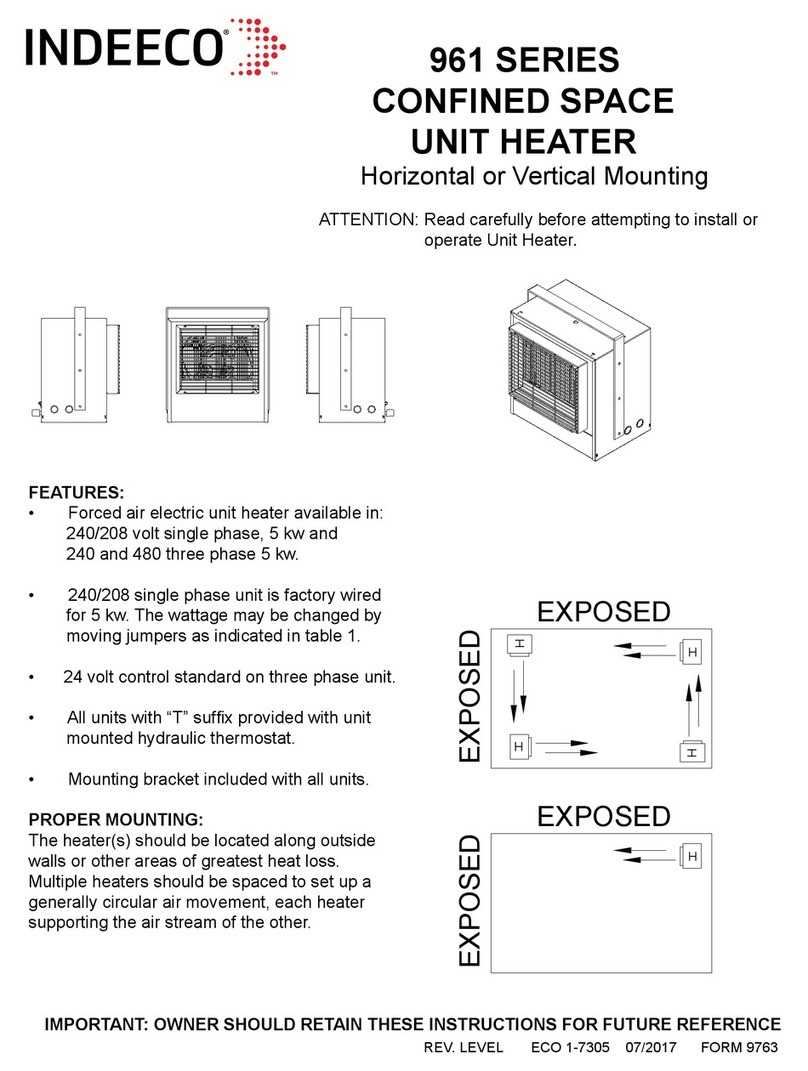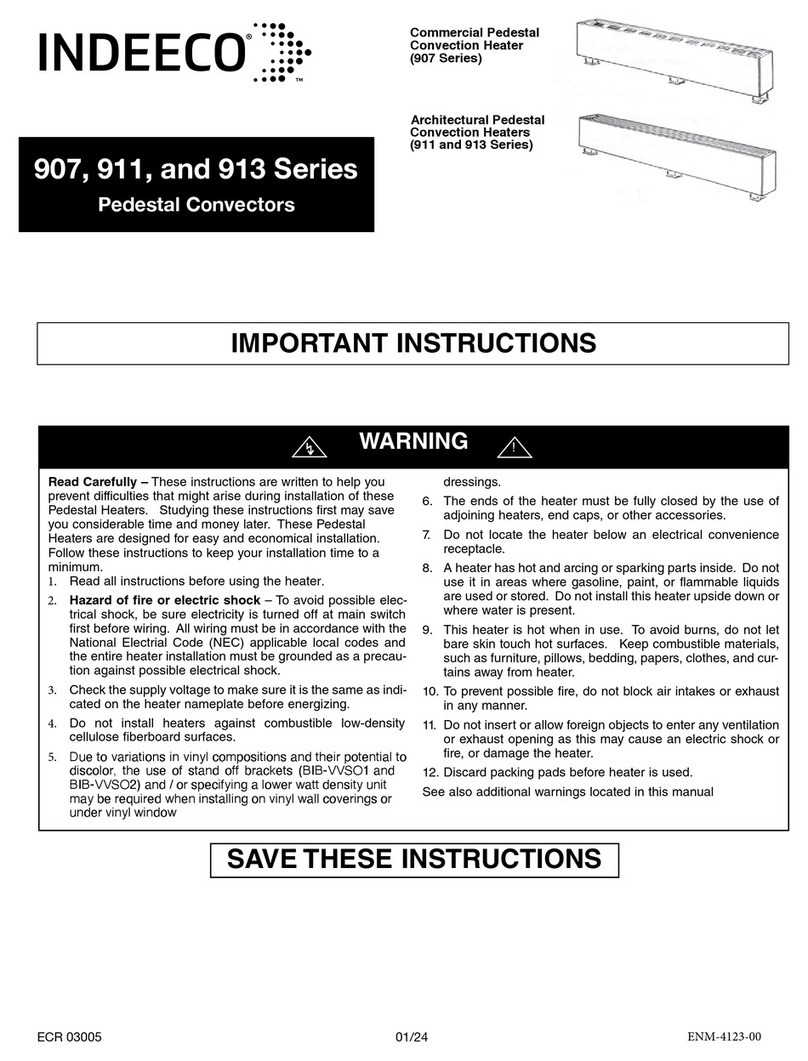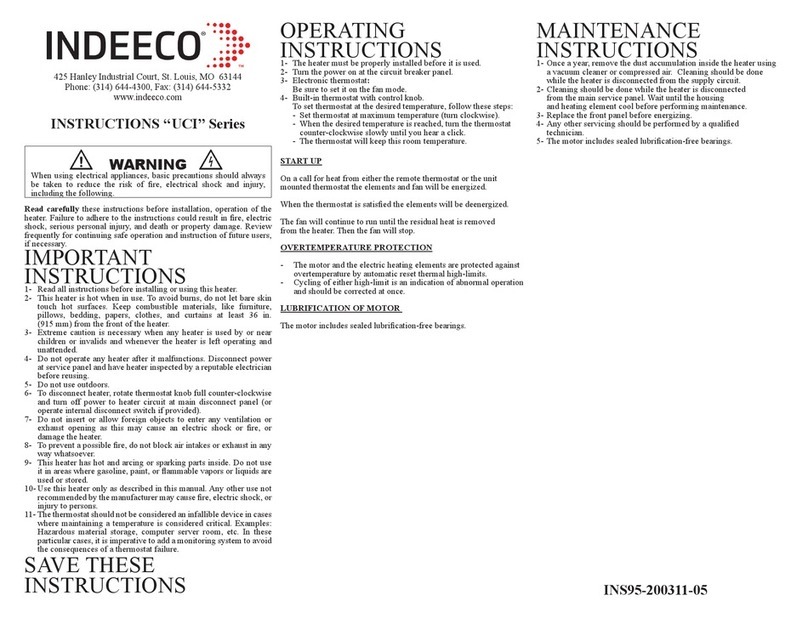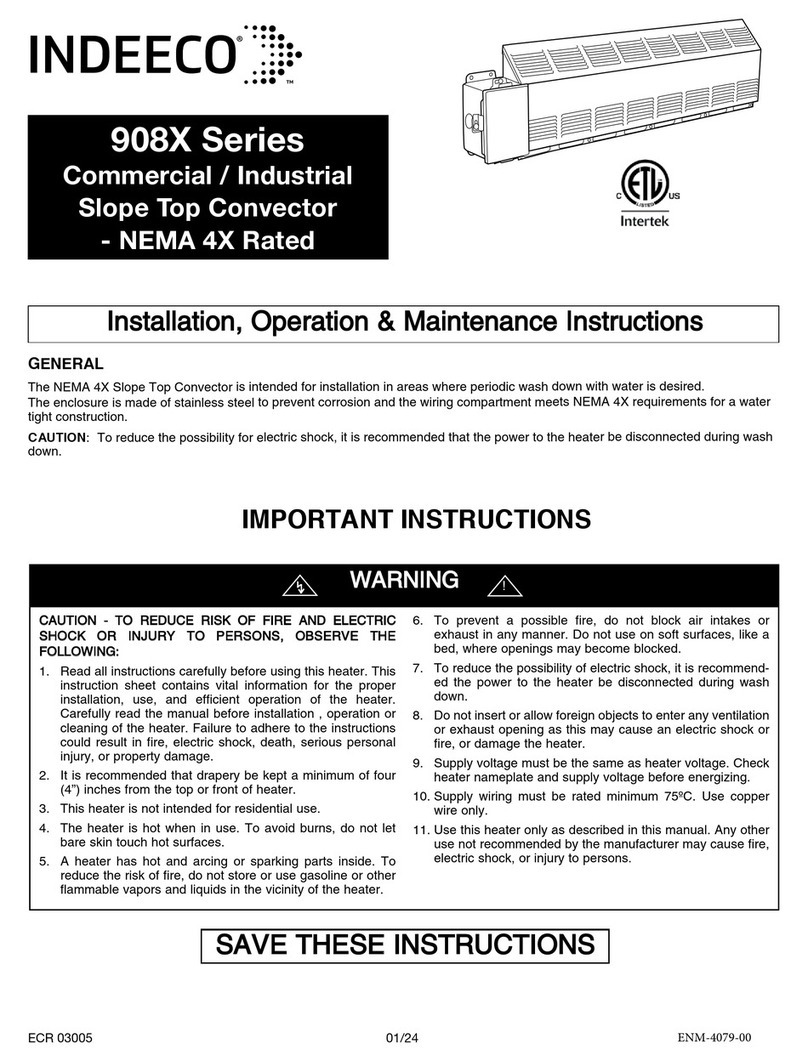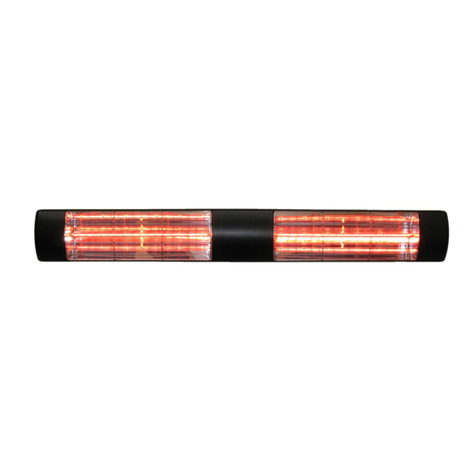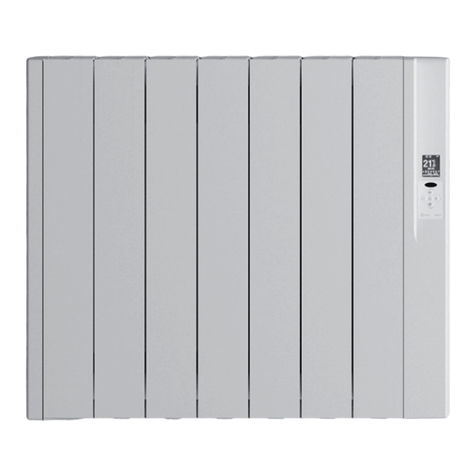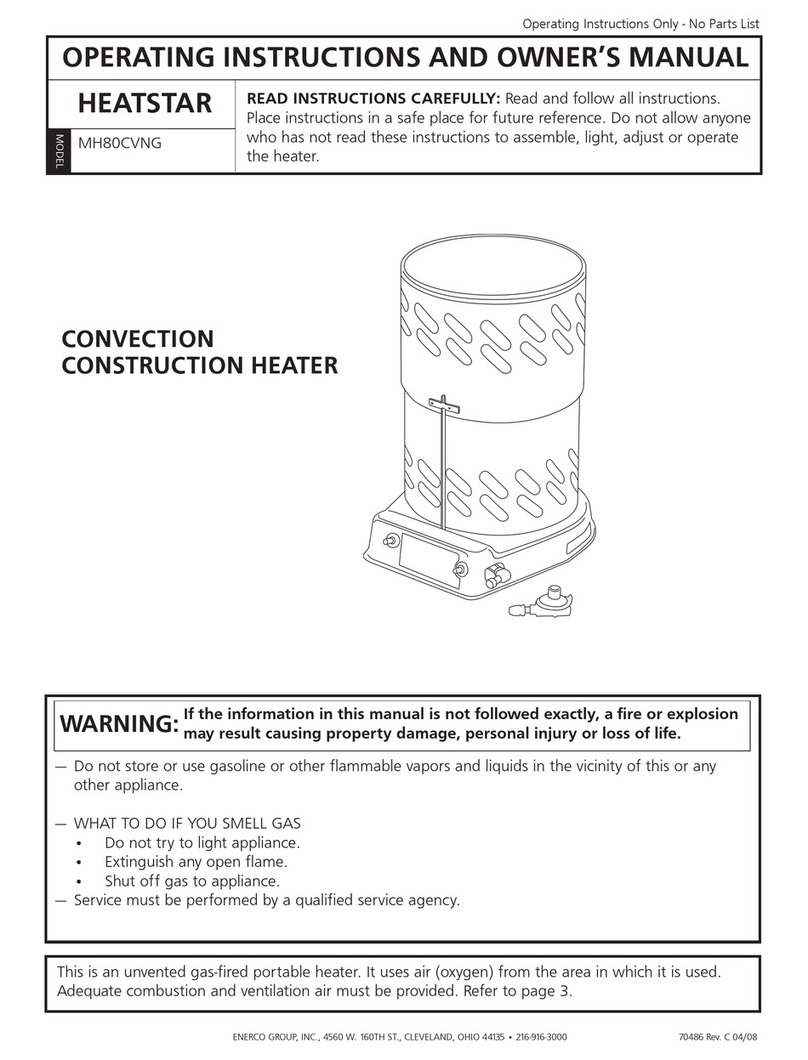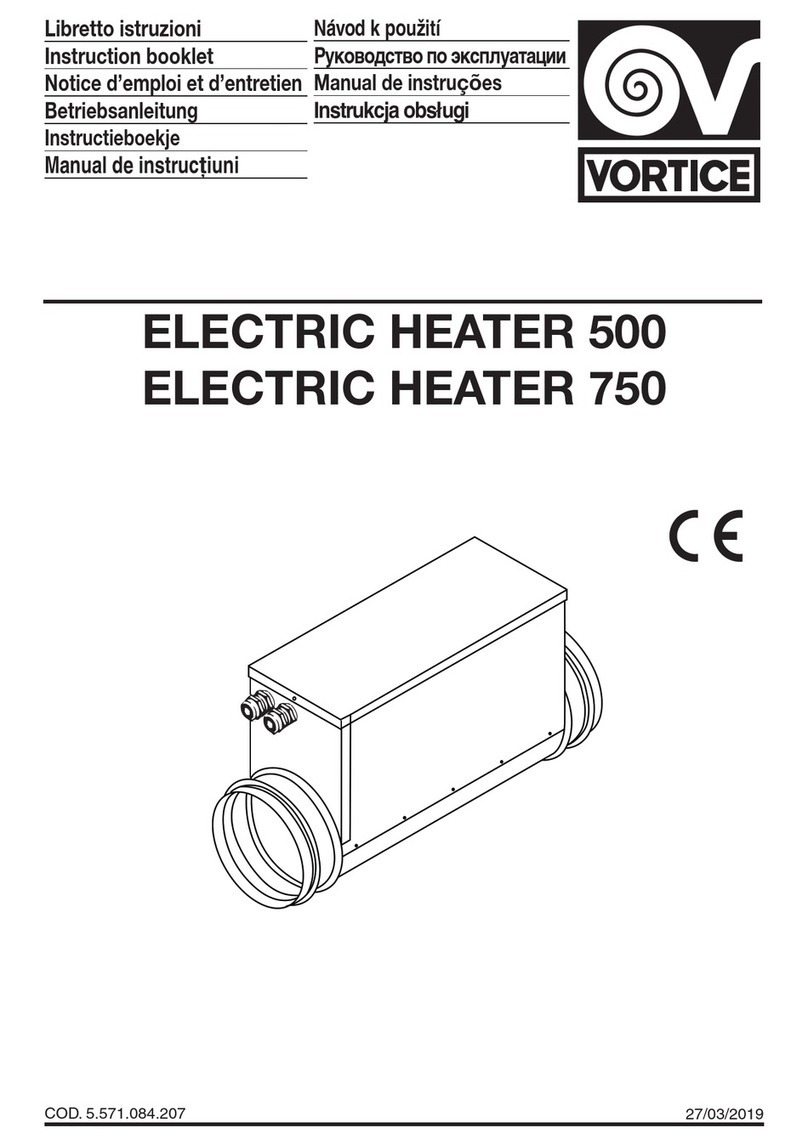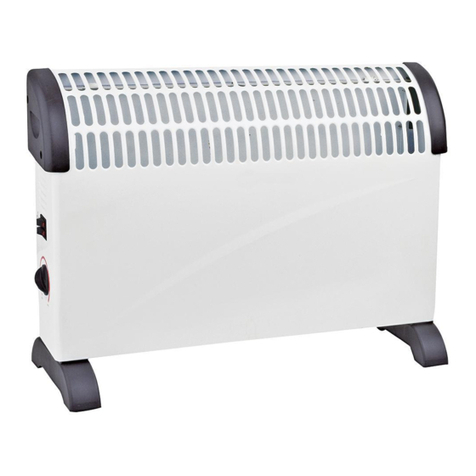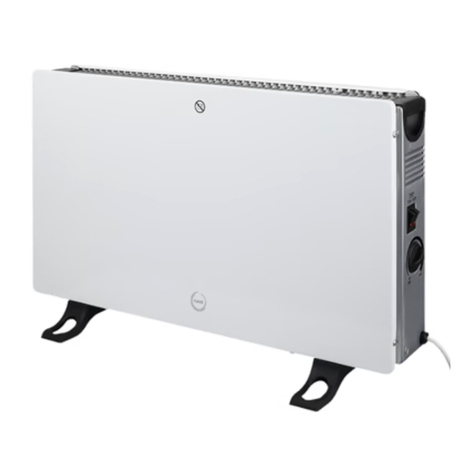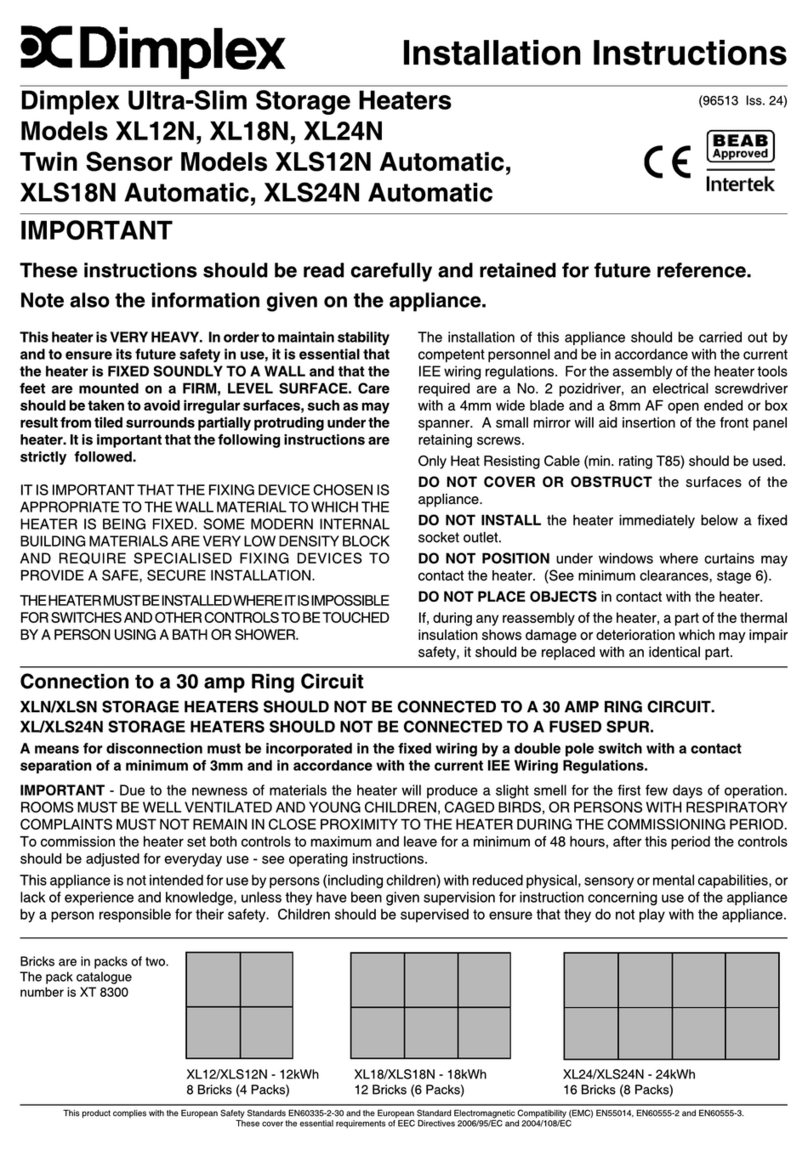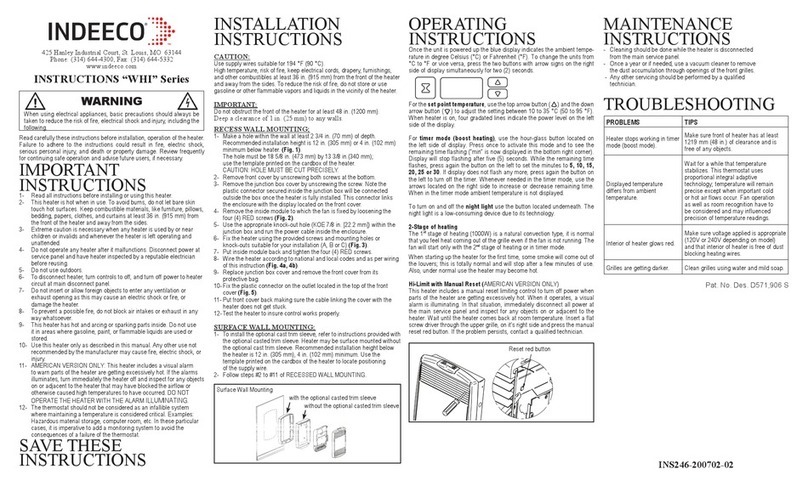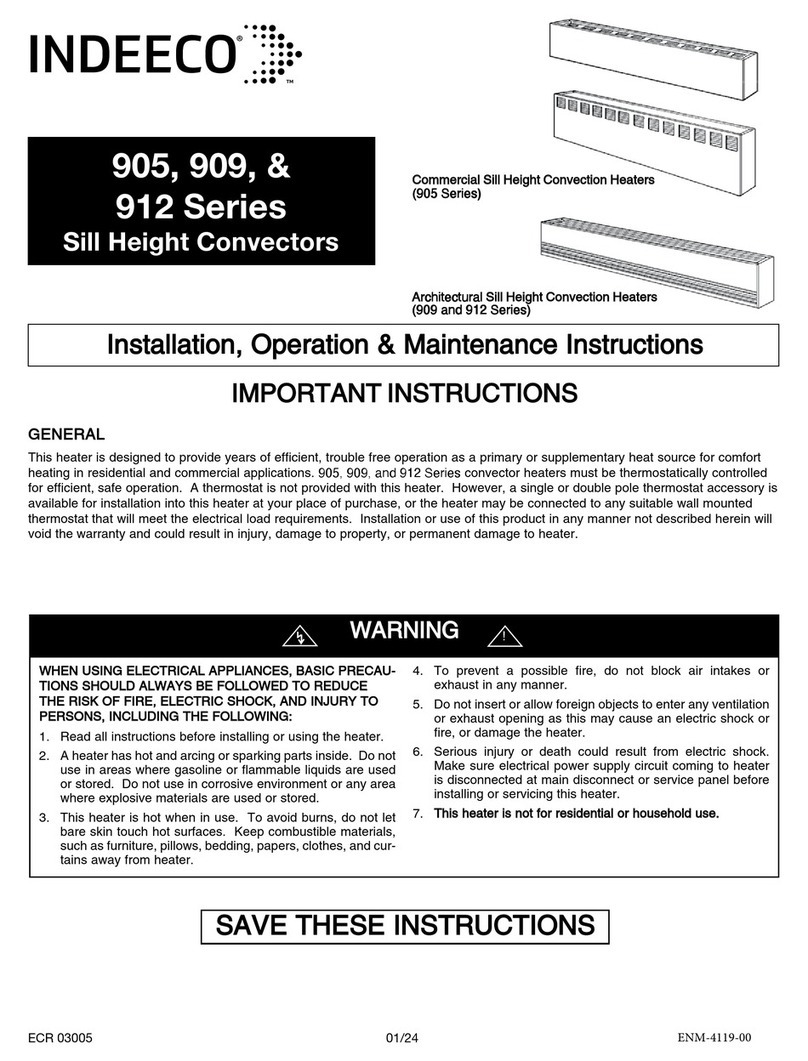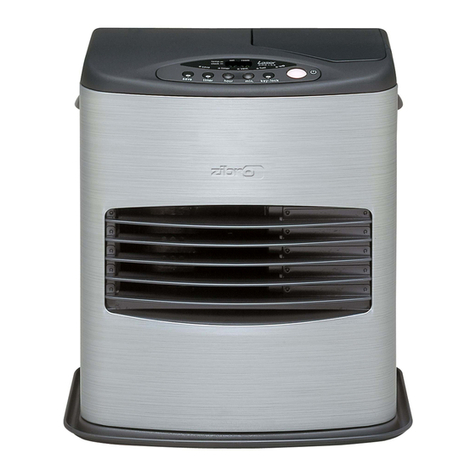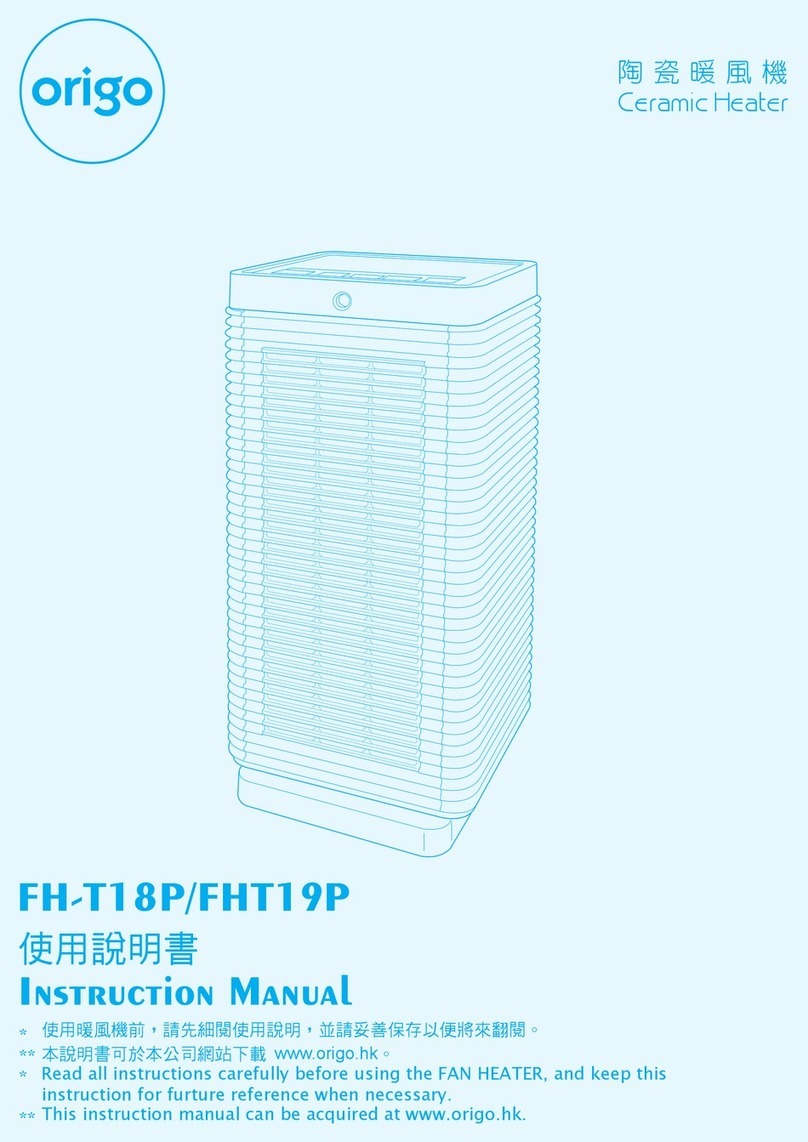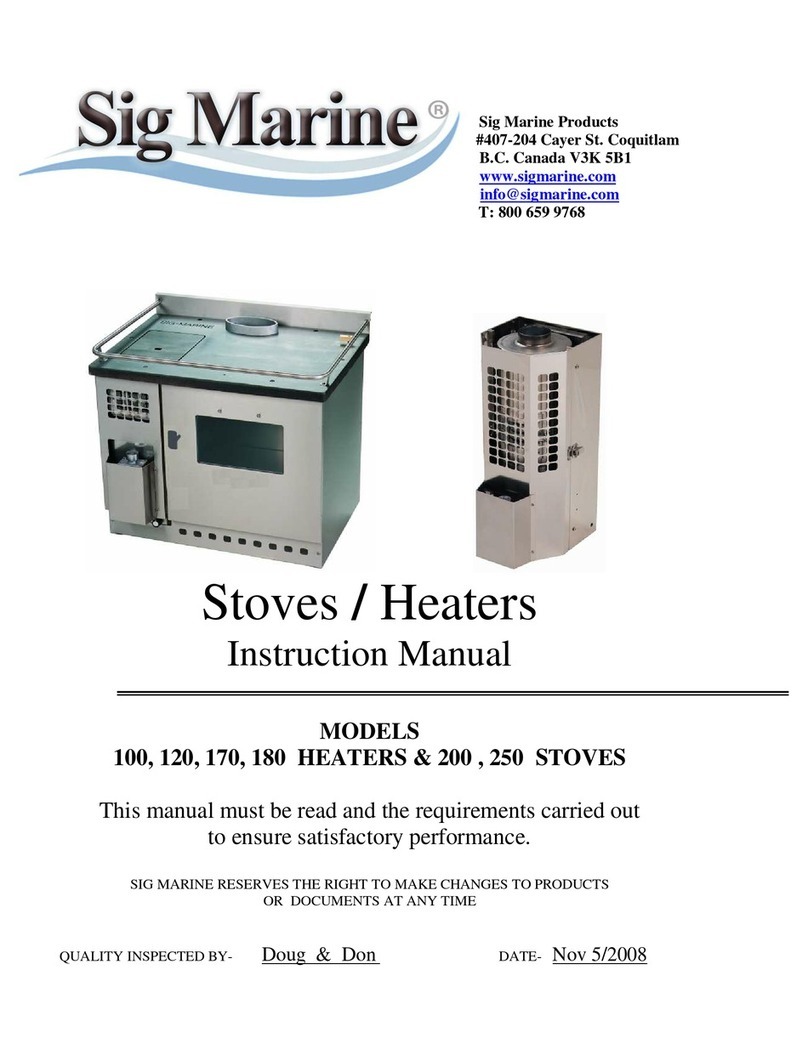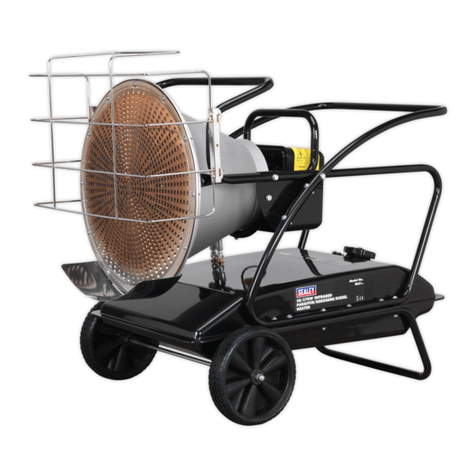
Be sure the terminal box cover is properly installed at all
times to ensure personnel protection. Also, contaminants
can create leakage, (shock) hazards, permanent heater
damage or failure and should be avoided.
It is recommended to perform an insulation resistance test
prior to energizing the equipment. If the value is less than 1
Meg Ohm using a 500Vdc or similar tester, refer to
Maintenance and Troubleshooting sections.
OPERATION
To operate this heater, ensure the fan is operating, and
energize the main supply disconnect. Set the controlling
device to the desired temperature.
During initial heating, it is recommended to slowly ramp up
the process set point and inspect the heating system for
problems.
DO NOT operate heaters at voltages in excess of that
marked on the heater. Excess voltage can shorten heater
life or overload the branch circuit wiring.
DO NOT operate heaters at sheath temperatures higher
than the recommended maximum. Excess temperatures
can cause premature failure. Generally, sheath materials
are limited to 1400oF for stainless steel and 1600oF for
Incoloy.
DO NOT operate heaters at flow rates below the design
flow range. Reduced flow can shorten heater life, or cause
nuisance tripping of thermal safeties. Note that heaters with
SCR control can typically operate at reduced flows down to
1/10th of the design flow if the controller is properly tuned,
and over-temperature safety devices are set at an
appropriate point to protect the heater and fluid.
INDEECO recommends that all safety interlocks are tested
during initial startup to ensure they properly disable the
heater. After 10 days of operation, retighten all electrical
connections.
MAINTENANCE
Periodically check all electrical connections, including field
and factory-made connections for tightness, and all wiring
for deterioration at least once a year.
Other parts of the heating system such as fans and filters,
should also be periodically inspected for obstructions,
proper operation, etc.
Inspect the terminal enclosure and conduit connections for
evidence of water leaks or moisture collection. Tighten
connections as required. Clean up any corrosion. Do not
continue using a heater with signs of damage.
Where buildup of dirt or solids on the heating elements or
significant corrosion is expected, periodically inspect the
heating elements. Do not continue using a heater with
signs of damage.
Replacing Resistance Coils on Open Coil Heaters:
The condition of the ceramics must be considered before
attempting to replace coils. Cracked or damaged ceramics
must be replaced. Contact the factory before replacing any
coils with damaged ceramics.
Field replaced heating coils must be installed properly or
failure may occur. Sketch the coil and bussing configuration
before starting, or take pictures.
Remove the burned out coil by pulling lightly, and at the
same time turning the coil back and forth. Check the
ceramics near the area where the burnout occurred. Burn
spots should be cleaned with a dry clean paper or cloth
towel. Oil or other contamination on the heater will cause a
failure.
The new coil should be stretched to the correct length (do
not over stretch). Lay the existing coil on a flat bench, and
evenly stretch the new coil to match. String the new coil by
starting at the center of the coil and working towards both
ends. Lightly push with a constant back and forth turning
motion. After the coil is in place, reconnect any removed
bussing.
TROUBLESHOOTING
The nature of the magnesium oxide used to electrically
isolate the nickel chromium resistance wire in tubular and
finned tubular heating elements, or ceramic bushings on
open coil heaters, is such that over a long period of storage,
they will absorb considerable moisture from the atmosphere
unless hermetically sealed. It is recommended to perform
an insulation resistance test prior to energizing the
equipment. If the value is less than 1 Meg Ohm using a
500Vdc or similar tester, care must be taken to dry out the
heater to prevent failure. It is recommended that the
elements be turned on at a reduced voltage at first to boil off
the moisture. Meg Ohm readings may drop initially after a
few minutes of operation, indicating moisture being forced
out of the elements. The terminal enclosure lid should be
left open during this period to allow the moisture to escape.
If the heater has a manual-reset high limit thermostat, be
sure that the reset button is pressed in.
The heating elements are not field-repairable. The only
recommended field repairs are to remove and replace the
faulty heating elements or coils, or to return the heater to
the factory for repair.
If reduced heat output is suspected, verify the condition of
the heating elements by using an ammeter to check the
current draw of each input line. All input lines should draw
approximately equal current, which should agree with
nameplate rating. If they do not, one or more of the heating
elements could be damaged.
CAUTION
Troubleshooting and repairs should only be
attempted by qualified maintenance personnel.




